Factors to Consider When Purchasing a new Washing Machine
Click to jump to Type
Click to jump to Cold Fill
Click to jump to Wash Programmes
Click to jump to Spin Speeds
Click to jump to Washer Dryers
Click to jump to Energy Efficiency
Click to jump to Installation
Click to jump to Size and Measurement
Type
While you might not give much thought to the type of washing machine you’d like for your home, there are several to choose from and each comes with it’s own benefits – it’s all about which suits your needs best.
Freestanding
Most homes have a freestanding washing machine and more often than not it’s simply out in the open. This is useful for gaining access to, and setting up the pipework at the back of your unit and it gives you flexibility when it comes to rearranging your setup. Bear in mind also that if your front loader machine vibrates and wobbles a lot, a freestanding unit is easier to adjust and won’t damage anything.
Integrated
A lot of people prefer to have all their appliances in their kitchen or utility room integrated in some way. You can also have a concealed front loading washing machine in the same way, with a standard panel door you close to hide the unit. Remember, however, this might make it more difficult for maintenance further down the line.
Semi-integrated
This is, again, a front loading machine but instead of being fully hidden away in your units it has a panel to match your other units with a gap for you to get to the console and the buttons. The same considerations you have for a fully integrated unit apply here also.
Top Loaders
You might most associate top loading washing machines with American television shows, but they are also available here in the UK. Often narrower than their American counterparts they are ideal if you don’t have enough width for a front loading machine and if you don’t want to stoop to load your washing into the drum.
Think about your design...
If your kitchen is already designed to accept a freestanding unit then this is your best bet, don’t go forcing an appliance in where it isn’t wanted. On the flip side of this, if you’re planning a new a kitchen, it’s the ideal time to look at integrated appliances to preserve the look of your kitchen and the design of your units

Cold Fill
The debate rages on when it comes to cold fill washing machines. Once upon a time every washing machine had the option to be a hot fill appliance, taking hot water direct
from your boiler system to aid with your washing, but manufacturers now claim that they have removed this option for the benefit of consumers and the environment.
Cold fill washing machines are now the standard, with manufacturers claiming that hot water kills the enzymes in your washing detergent which are supposed to tackle dirt and germs. The counter-argument is that this is simply a way for manufacturers to the remove cost of having the additional fittings for a hot water unit.
Regardless of what the real reason is, a cold fill washing machine will suffice for many people, the only thing to really consider is whether this will impact anyone in your family who has a skin condition – these can be aggravated if clothes are not washed at a high enough temperature.
Think about solar power...
A hot fill appliance would normally take water from
your boiler system, putting additional strain on your energy bills. However, if you have solar power for some of your hot water then linking this to your washing machine could be useful in the spring and summer months.
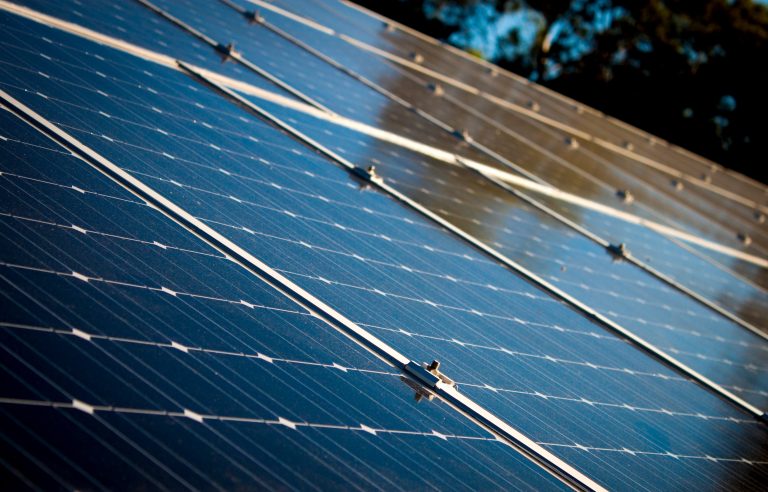
Wash Programmes
Working out what the programmes on your washing machine can actually do is a great way to get the most out of your appliance and avoid damage to clothes. For this reason, it’s good to know which materials need which kind of wash and what those symbols on your labels actually mean.
- Wool – Requires only the gentlest wash but plenty of water
- Synthetics – Requires a simple, gentle action
- Delicates – Requires a slightly gentler programme than synthetics
- Cottons – Requires the most energy with warmer water and a longer spin
Washing machine symbols
Take a look at our Washing Machine Symbols Guide for more information about using your washing machine.
Short washes
The short wash or quick wash function allows you to get things washed quicker if they aren’t overly soiled or dirtied, saving you time and money.

Hold rinse
Some machines have a hold rinse function which keeps your washing in the final cleaning stage, allowing you to set it to spin dry when you’re actually around.
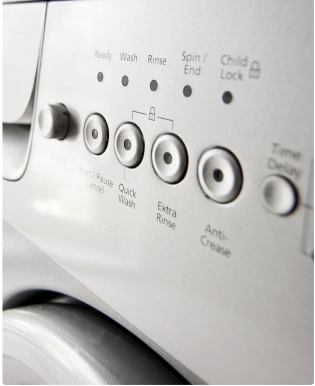
Pre-wash
A pre-wash function will allow you to remove some of the dirt and grime from anything which is heavily soiled, before completing a normal wash.
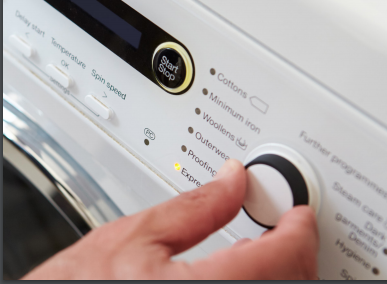
Spin Speeds
The spin cycle on your washing machine refers to the spins per minute (or revolutions per minute: RPM). Most washing machines now come with a variety of speeds for you to select, helping to protect your more delicate clothes or wring out other clothes more efficiently.
- Speeds between 1000 – 1800 rpm are suited to cottons
- Speeds between 400 – 800 rpm are better for delicate and synthetic clothes
Don’t be fooled by thinking that higher speeds will dry your washing faster. It can cost more to get a washing machine which has a 1800 rpm spin cycle, but some won’t give you any greater efficiency than if you set it to 1200 rpm.
By spinning the inner drum and creating a centrifugal effect, the clothes are wrung out by sheer force, with the moisture seeping through the small holes in your drum. To ensure the clothes are all wrung evenly, the drum will try to distribute the weight as best as possible before beginning a spin cycle.
Think about washer dryers...
If you have a washer dryer then you probably won’t be as concerned about spin cycles. However, drying your clothes through spinning can be more energy efficient and economical than going through a long drying cycle.
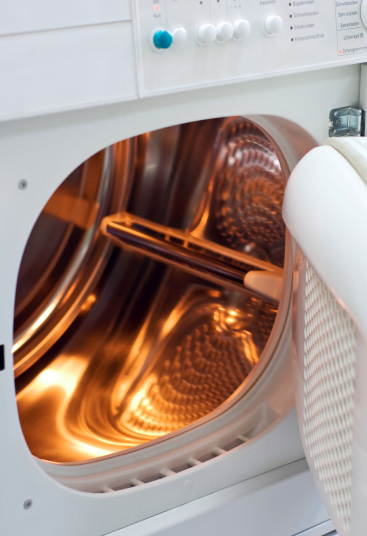
Washer Dryers
Having been around since the 1950s, washer dryers have been perfected over numerous decades, making them more efficient and reliable.
Advantages
Where space is a factor in your home, a washer dryer combines two appliances and halves the space you need to be able to do your laundry. This is useful for smaller households and for those who don’t need a huge unit for large, family sized loads.
You can still expect to get all the features of a regular washing machine or tumble dryer, and what you get for your money depends on how much you spend; the bigger
the budget, the more functions and features you get.
Disadvantages
For some people there are some big drawbacks on a washer dryer, namely the fact that the drum is smaller for the washing function. You won’t be able to fit as many
clothes in for dryer, since you can’t fill the drum – you will no doubt need to do half a load of drying at a time, slowing down your laundry process.
Similarly, for large households you’ll want to do a lot of washing and drying – possibly simultaneously – but with a washer dryer you can only do one or the other, which means you can’t get through a backlog of clothes quickly. This is important to bear in mind if you have a large family, with lots of clothes to wash and dry in a short time frame.
Energy Efficiency
Saving money on your bills is probably the biggest consideration when looking at the energy efficiency of an appliance, but it also goes a long way towards helping the environment in the long run. Like all appliances, washing machines are subject to the energy efficiency grading of A+++ down to G, with A+++ being the most efficient and G being the least.
It’s argued that the closer you have to an A+++ rated appliance the more you save, and while this might only amount to a few pence with each wash, it can quickly add up
over a year.
In some respects the technology you use will inform its efficiency, a machine with more functions might cost you more money but may have energy saving settings for you to utilise. Additionally, if you live in an area where electricity is cheaper at night, you might be able to use this to your advantage, shaving extra money off your bills.
Installation
Depending on who you buy your appliance from, you might be able to have the appliance installed by professionals; they’ll unpack the unit and take all their rubbish away, while some companies even offer to take your old appliance away too. Most companies who provide this part of the service also endeavour to recycle your old unit, making it an even wiser choice.
Installing Your Own Appliance
If you’re left to install the appliance yourself there are some key things you should bear in mind and some steps you’ll want to take:
- The first thing you should do is to make sure the floor is level and that it is solid and smooth.
- If you find that your floor is uneven you should be able to adjust the feet.
- Place some board under the feet if you have a grooved floor.
- Ensure you have enough room to situate the pipes and the power cable. The pipes should be connected to your waste water pipe and there should be no kinks.
- If you can, keep the pipes in an area where you can reach them, just in case you need repairs carrying out.
Once you’ve pushed your washing machine backwards into its designated spot, you’re ready to go; just ensure the spot is clear and clean so you don’t have to pull it back out again.
Think about integration...
Before you opt for the integrated washing machine, take the time to think about the possibility of it needing repairs. Any repairs carried out on an integrated appliance could mean damaging your units or fixtures to carry out the work.
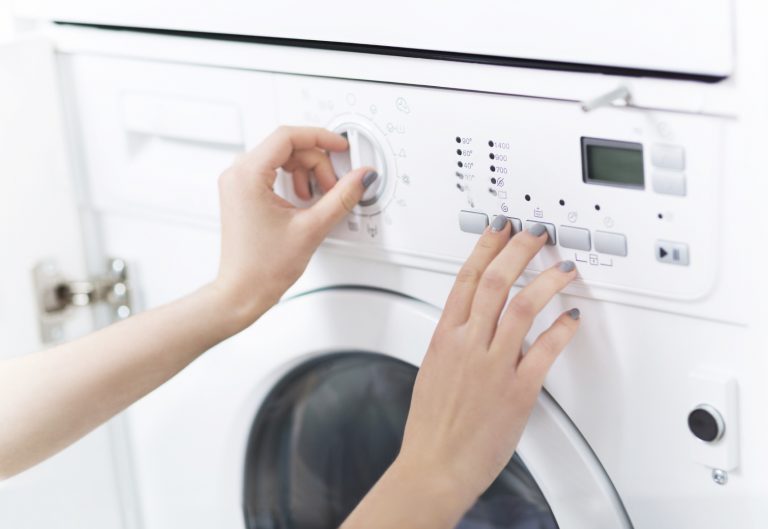
Size and Measurement
Full Appliance Size
Think about where you’d like your washing machine to be installed. Is there enough room? The best thing to do before you go and choose your new washing machine is to measure the dimensions of the space you have allocated for the appliance. It needs to fit comfortably and it needs to be located where you can connect the pipes to the waste water outlet.
An easy trick for if your new washing machine is going in the same place as the old one is to measure the old appliance, as you can use this as a rough guide for your next purchase.
Drum Size
Aside from the fact that you need the appliance to fit into your home, you also need to take note of the drum size. This is important as it will inform how large a load you can put on to wash. Most washing machine manufacturers will state the drum size in kg, so it’s handy to remember that 1kg is roughly the equivalent of 5 t-shirts.
Think about duvet sizes...
With a large enough drum you can wash your duvets, but you need a 6kg drum at the minimum to wash a single size duvet. The bigger the drum, the bigger the duvet which you can wash – all the way up to a king size.
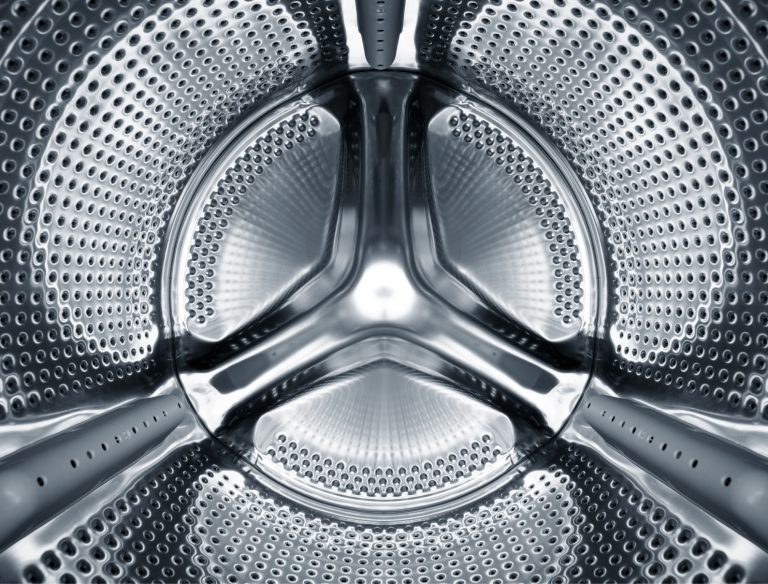
 Call Us
Call Us Book a Repair
Book a Repair
